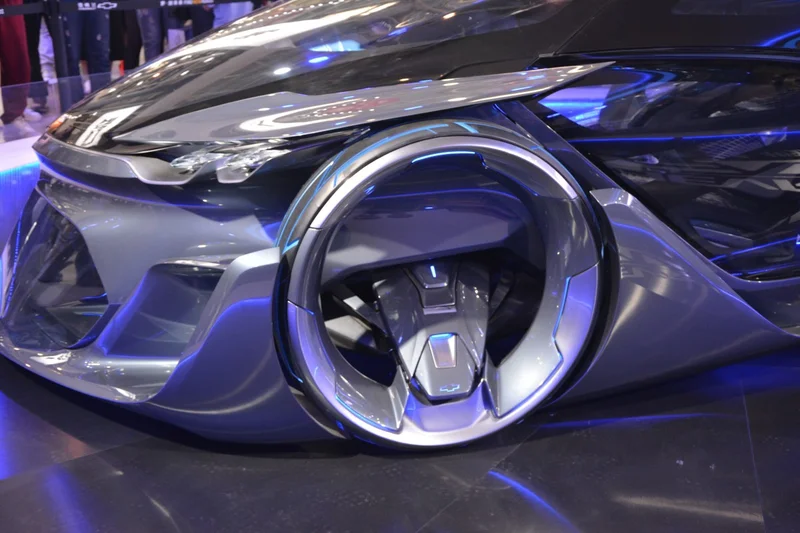Nvidia's GPU Depreciation: What It Means for AI's Future
The AI Time Machine: How Nvidia's Software Hiccups Could Actually Speed Up Innovation
Okay, let's dive into something really interesting today. We've all seen the headlines about Nvidia – the undisputed king of AI hardware – hitting record highs. Five trillion dollars! But underneath that success story, there's a fascinating little subplot brewing: apparent growing pains in their enterprise software division. Internal emails are hinting at a "fundamental disconnect" with major clients, especially in those heavily regulated industries. Now, most folks might see this as a problem, a bump in the road. Me? I see something else entirely: a potential catalyst for accelerated innovation.
Here's the thing: Nvidia's hardware is so powerful, so far ahead of the curve, that it's practically forcing the software world to catch up. Think about the early days of the printing press. Gutenberg's invention was revolutionary, but it took time for society to figure out how to fully utilize it, to develop the business models, the distribution networks, and even the writing styles that would maximize its impact. Nvidia’s software, like Nvidia AI Enterprise (NVAIE), Run:ai, Omniverse, and vGPU, are all pieces of a grander puzzle, a suite of tools designed to unlock the full potential of their silicon.
But what happens when the hardware is so advanced that the existing software paradigms simply can't keep pace? Well, you get friction. You get internal debates about messaging, about educating clients, about navigating the legal and procurement hurdles of regulated industries. You get emails fretting about sales targets not being met. But what else do you get? You get innovation. Because when Nvidia's clients – the IRS, Nasdaq, AT&T – start pushing back, demanding more, questioning assumptions, Nvidia is forced to re-evaluate, to refine, to ultimately improve its software offerings.
Beyond the Bugs: Why AI's Growing Pains Signal a Brighter Future
The Silver Lining in Software Snags

And that's where the real magic happens. This isn't just about selling more software licenses; it's about shaping the future of AI. Remember that email mentioning a "fundamental disconnect" with clients' legal and procurement teams? That's not a bug; it's a feature. It means that Nvidia is pushing the boundaries of what's possible, forcing these organizations to confront the thorny issues of data security, indemnity obligations, and damages caps in the age of AI. These aren't just technical challenges; they're societal challenges. And by grappling with them head-on, Nvidia is helping to pave the way for the responsible and widespread adoption of AI across all sectors.
The fact that Nvidia is forecasting healthy software sales despite these hiccups is also incredibly telling. One email highlighted stand-alone software projected to hit 110% of sales targets. This suggests that the demand is there; the market is hungry for AI solutions. The challenge, then, isn't about convincing people that AI is valuable (that ship has sailed); it's about making it accessible, reliable, and secure. Honestly, when I read about these internal debates at Nvidia, my first reaction was pure excitement. Nvidia's internal emails reveal a 'fundamental disconnect' with major software clients This is the kind of messy, chaotic, but ultimately productive struggle that defines technological progress. It reminds me of the early days of the internet, when everyone was scrambling to figure out how to build websites, how to monetize content, how to navigate the legal and ethical minefields of this new digital frontier.
What does this mean for us? Well, for starters, it means that the AI revolution is far from over. It's still in its early stages, and there are plenty of challenges to overcome. But it also means that the potential for AI to transform our lives is even greater than we imagined. Imagine a world where AI is seamlessly integrated into every aspect of our society, from healthcare to education to transportation. A world where AI helps us solve some of the world's most pressing problems, from climate change to poverty to disease. That's the future that Nvidia is helping to build, one software snag at a time. But let's also not forget the ethical tightrope we're walking. As AI becomes more powerful, we have a responsibility to ensure that it's used for good, that it's accessible to all, and that it doesn't exacerbate existing inequalities. The future is bright, but it's up to us to make sure it's a just future.
The Future is Being Written, Line by Line
This isn't just about Nvidia's software; it's about the entire AI ecosystem. These growing pains are a sign that the industry is maturing, that it's moving beyond the hype and into the realm of real-world applications. And that's something to be incredibly excited about. What a time to be alive, indeed.
-

Warren Buffett's OXY Stock Play: The Latest Drama, Buffett's Angle, and Why You Shouldn't Believe the Hype
Solet'sgetthisstraight.Occide...
-

The Business of Plasma Donation: How the Process Works and Who the Key Players Are
Theterm"plasma"suffersfromas...
-

The Great Up-Leveling: What's Happening Now and How We Step Up
Haveyoueverfeltlikeyou'redri...
-

NJ's ANCHOR Program: A Blueprint for Tax Relief, Your 2024 Payment, and What Comes Next
NewJersey'sANCHORProgramIsn't...
-

The Future of Auto Parts: How to Find Any Part Instantly and What Comes Next
Walkintoany`autoparts`store—a...
- Search
- Recently Published
-
- Maxi Doge Presale: Crypto News and Price Crash Concerns
- Microsoft Stock: AI Revolution vs. Investor Jitters
- John Ternus at Apple: Net Worth, Age, and Tim Cook Succession Plans
- Google Stock: Berkshire Hathaway's Billion-Dollar Bet and What We Know
- CoinMarketCap: Crypto Prices, Bitcoin vs. XRP, and What's Real
- Indigo: What's the Story?
- Daniel Driscoll and the Army Overhaul: What It Means for the Future of Defense
- Mars' Orbit: What We Know About Earth, Venus, and the Other Planets
- Firo Hard Fork: What to Expect and Why It Matters
- USAA Insurance: Car, Life, and Health—What We Know
- Tag list
-
- carbon trading (2)
- Blockchain (11)
- Decentralization (5)
- Smart Contracts (4)
- Cryptocurrency (26)
- DeFi (5)
- Bitcoin (32)
- Trump (5)
- Ethereum (8)
- Pudgy Penguins (7)
- NFT (5)
- Solana (5)
- cryptocurrency (6)
- XRP (3)
- Airdrop (3)
- MicroStrategy (3)
- Stablecoin (3)
- Digital Assets (3)
- PENGU (3)
- Plasma (5)
- Zcash (6)
- Aster (5)
- investment advisor (4)
- crypto exchange binance (3)
- SX Network (3)
